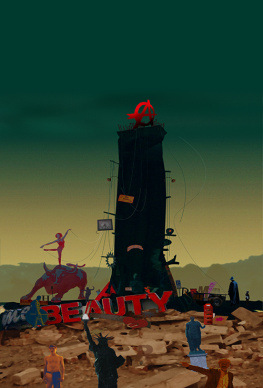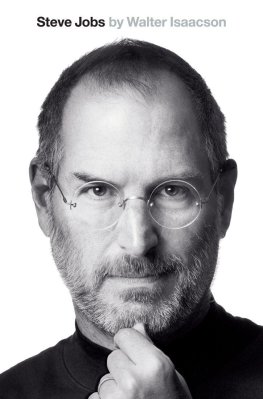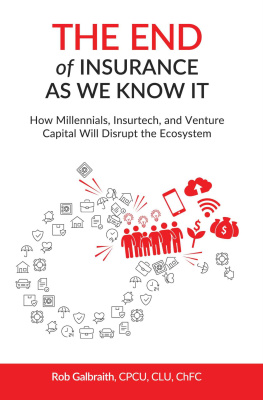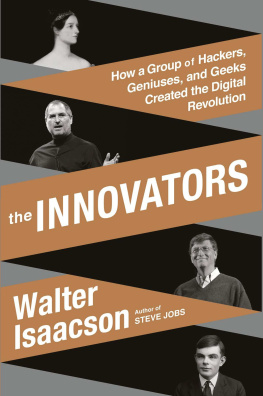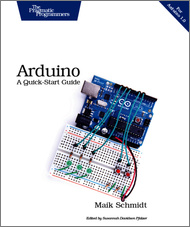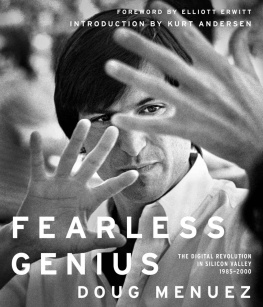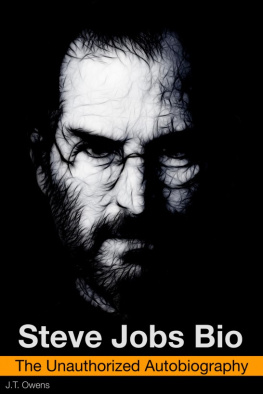HOW A GROUP OF HACKERS, GENIUSES, AND GEEKS CREATED THE DIGITAL REVOLUTION
Thank you for downloading this Simon & Schuster eBook.
Join our mailing list and get updates on new releases, deals, bonus content and other great books from Simon & Schuster.
C LICK H ERE T O S IGN U P
or visit us online to sign up at
eBookNews.SimonandSchuster.com
We hope you enjoyed reading this Simon & Schuster eBook.
Join our mailing list and get updates on new releases, deals, bonus content and other great books from Simon & Schuster.
C LICK H ERE T O S IGN U P
or visit us online to sign up at
eBookNews.SimonandSchuster.com
ALSO BY WALTER ISAACSON
Steve Jobs
American Sketches
Einstein: His Life and Universe
A Benjamin Franklin Reader
Benjamin Franklin: An American Life
Kissinger: A Biography
The Wise Men: Six Friends and the World They Made (with Evan Thomas)
Pro and Con

Simon & Schuster
1230 Avenue of the Americas
New York, NY 10020
www.SimonandSchuster.com
Copyright 2014 by Walter Isaacson
All rights reserved, including the right to reproduce this book or portions there of in any form whatsoever. For information address Simon & Schuster Subsidiary Rights Department, 1230 Avenue of the Americas, New York, NY 10020.
First Simon & Schuster hardcover edition October 2014
SIMON & SCHUSTER and colophon are registered trademarks of Simon & Schuster, Inc.
Excerpts from All Watched Over by Machines of Loving Grace from The Pill Versus the Springhill Mine Disaster by Richard Brautigan. Copyright 1968 by Richard Brautigan. Reproduced by permission of Houghton Mifflin Harcourt Publishing Company. All rights reserved.
The Simon & Schuster Speakers Bureau can bring authors to your live event. For more information or to book an event contact the Simon & Schuster Speakers Bureau at 1-866-248-3049 or visit our website at www.simonspeakers.com.
Photo research and editing by Laura Wyss, Wyssphoto, Inc., with the assistance of Elizabeth Seramur, Amy Hikida, and Emily Vinson, and by Jonathan Cox.
Interior design by Ruth Lee-Mui
Jacket design by Pete Garceau
Jacket art (from top to bottom):
Ada Lovelace by Margaret Carpenter/Hultpn Archive/Getty Images; Steve Jobs by Justin Sullivan /Stringer/Getty Images News; Bill Gates by Theo Wargo/WireImage for OMEGA /Getty Images; Alan Turing by Private Collection/Prismatic Pictures/Bridgeman Images; Author photo by Patrice Gilbert
Library of Congress Cataloging-in-Publication Data
Isaacson, Walter.
The innovators : how a group of inventors, hackers, geniuses, and geeks created the digital revolution / Walter Isaacson. First Simon & Schuster hardcover edition.
pagescm
1.Computer scientistsBiography.2.Computer scienceHistory.3.InternetHistory.I.Title.
QA76.2.A2I872014
004.0922dc23
[B]2014021391
ISBN 978-1-4767-0869-0
ISBN 978-1-4767-0871-3 (ebook)
Photo credits appear on .
CONTENTS
1843

Ada, Countess of Lovelace, publishes Notes on Babbages Analytical Engine.
1847
George Boole creates a system using algebra for logical reasoning.
1890
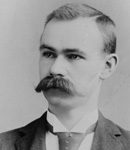
The census is tabulated with Herman Holleriths punch-card machines.
1931

Vannevar Bush devises the Differential Analyzer, an analog electromechanical computer.
1935

Tommy Flowers pioneers use of vacuum tubes as on-off switches in circuits.
1937

Alan Turing publishes On Computable Numbers, describing a universal computer.
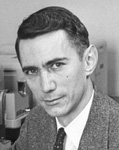
Claude Shannon describes how circuits of switches can perform tasks of Boolean algebra.
Bell Labs George Stibitz proposes a calculator using an electric circuit.
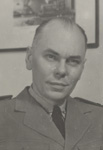
Howard Aiken proposes construction of large digital computer and discovers parts of Babbages Difference Engine at Harvard.
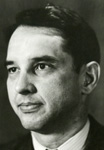
John Vincent Atanasoff puts together concepts for an electronic computer during a long December nights drive.
1938
William Hewlett and David Packard form company in Palo Alto garage.
1939
Atanasoff finishes model of electronic computer with mechanical storage drums.
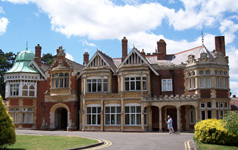
Turing arrives at Bletchley Park to work on breaking German codes.
1941
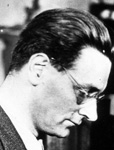
Konrad Zuse completes Z3, a fully functional electromechanical programmable digital computer.
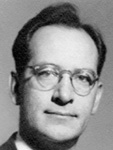
John Mauchly visits Atanasoff in Iowa, sees computer demonstrated.
1942

Atanasoff completes partly working computer with three hundred vacuum tubes, leaves for Navy.
1943
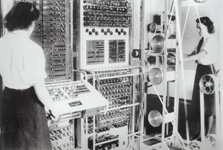
Colossus, a vacuum-tube computer to break German codes, is completed at Bletchley Park.
1944
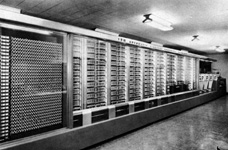
Harvard Mark I goes into operation.
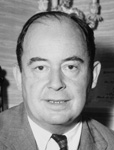
John von Neumann goes to Penn to work on ENIAC.
1945
Von Neumann writes First Draft of a Report on the EDVAC describing a stored-program computer.

Next page



